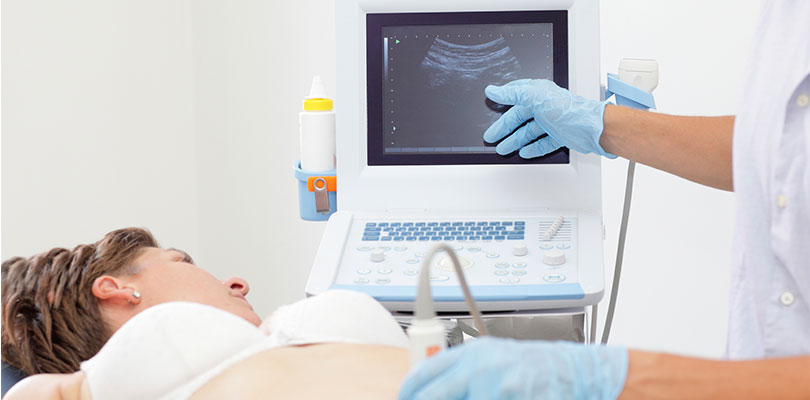Photo Credit: LittleBee80 / iStockPhoto.com
Straightforward Steps to Reduce Your Cervical Cancer Risk
Cervical cancer makes up a relatively small percentage of cancer diagnoses each year, and far fewer women will die from it than they did even a few decades ago. But despite the advances in prevention and treatment, cervical cancer remains a clear and present threat, especially if you don’t take the right precautions.
Cancer of the cervix can spread before you notice any physical changes, so while it’s important to know what symptoms to watch for (like irregular bleeding, discharge, or pain during sex), it’s more important that you don’t wait for warning signs.
Learn where cervical cancer begins, and how cancer screening, safe sex, and smart lifestyle changes can decrease your risk.
Finding the Source: HPV and Cervical Cancer
The main types of cervical cancer can most often be traced to one extremely common, and otherwise fairly harmless, infection: the human papilloma virus (HPV). There are over 100 types of HPV, and 40 of those are passed around through sexual contact.
While many strains won’t raise your risk of serious health issues, 15 types of HPV can significantly raise your chances of developing cervical cancer, with two particular strains (type 16 and type 18) leading the pack.
The more HPV infections you are exposed to, the higher your chances of developing cancer of the cervix. Of course, it’s important to remember that not every woman who contracts HPV will get cervical cancer — in fact, most sexually active women will get some form of HPV at one point or another, and the vast majority of women will never develop cervical cancer.
Experts know which HPV strains are particularly problematic, and have developed a vaccine to protect against these strains. The vaccine is usually administered in adolescence, before girls become sexually active, and has helped to lower the rates of cervical cancer even more over recent years. However, it doesn’t protect against all types of HPV, and is not a guarantee that cancer won’t develop.
Why Screening Is So Important
Cancer screening is a complex subject because there are no universal guidelines. Even regular testing won’t help much with certain types of cancer, but for other types, targeted tests and examinations can make all the difference. Cervical cancer definitely falls into the latter category.
The Power of the Pap Smear
Since the Pap smear (or Pap test) was introduced more than half a century ago, hundreds of thousands of women have avoided a grim fate. The rate of death from cervical cancer has fallen dramatically, and many cases are caught early enough to eradicate the problem with minimal risk or challenge.
A Pap test involves the manual removal of cells from the cervix to be studied closely under a microscope. The aim is to find HPV, cancerous cells, or pre-cancerous cells, so appropriate action can be taken.
Sometimes this means closer monitoring or surgical removal of some cervical tissue. However, regular Pap testing increases the likelihood that abnormal cells are caught before they grow into cancer (and before they demand more aggressive treatment).
Survival Rates Depend on Early Detection
Although cervical cancer is no longer the biggest cancer threat for women, it’s still the most common cancer among women under 35 years old. Over 12,000 women are diagnosed with invasive cervical cancer each year, and 4,000 will die from the disease.
However, cervical cancer only becomes life-threatening when it’s allowed to grow unheeded — that is, if you don’t take screening seriously, and see your doctor at the first sign of a problem. Typically, most women between 21 and 29 should have a Pap test every three years, and women over the age of 30 should have a Pap test (and an HPV test) every five years.
On the other hand, having certain risk factors could call for more frequent screening.
Genetic and Lifestyle Risk Factors to Consider
Having HPV is one part of the problem, but the virus alone cannot cause cancer. Instead, cancer is triggered by a mix of factors, often including genetic predisposition, habits and lifestyle, and medical history.
Family Connection
Like many other cancers, there is a genetic component to cervical cancer risk: some research has shown that if a first-degree relative (your mother, sister or daughter) was diagnosed with cervical cancer, your chances of developing the disease double.
Here are some ways to prevent melanoma, and what you can do to make sure any skin problems don’t grow into life-threatening situations.
Sexual History
Since cervical cancer stems from the HPV virus, which is sexually transmitted, women who have had more sexual partners have a higher chance of contracting the virus and possibly developing cervical cancer. Likewise, those who began having sex at an early age also have a higher risk of cervical cancer.
Sexually Transmitted Infections
Studies have indicated that having both herpes and the HPV infection can increase cervical cancer risk. Research has also shown that a woman’s risk of developing squamous cell cancer nearly doubles when both HPV and chlamydia are present.
Reproductive History
Having successful pregnancies can help ward off certain types of female cancers, but sadly, cervical cancer is not one of them. In fact, women who have three or more full-term pregnancies increase their cervical cancer risk, and those who were younger than 17 when they had their first baby are twice as likely to develop cervical cancer as women who became mothers after the age of 25.
Compromised Immune System
Immunity plays an important role in cervical cancer risk because it determines your chances of contracting the HPV virus. In turn, women with HIV or AIDS are more likely to have a pre-cancer that develops into an invasive cancer, and it’s more likely to happen quickly.
Women who take drugs to suppress an autoimmune disease (like rheumatoid arthritis or psoriasis) are also at a higher risk.
Smart Ways to Reduce Your Risk
Finding pre-cancers is a crucial element in protecting against cervical cancer, but so is preventing pre-cancers. The decisions you make in your daily life, combined with your general state of health, can have a big impact on your cancer risk.
Luckily, it is in your power to change any negative habits or problematic practices that could be working against you.
Maintain a Healthy Weight
Obesity raises your risk of all sorts of diseases and chronic health problems, including cervical cancer. Women who are overweight are more likely to develop one particular sort of cervical cancer called adenocarcinoma of the cervix.
Changing your diet and exercise habits will certainly help you shed some pounds, but focusing more on nutrition could also add another level of protection. Studies suggest that a diet low in fruits and vegetables can increase cervical cancer risk, so don’t hesitate to add more fresh produce to your daily diet.
Quit Smoking
Cervical cancer rates are higher in smokers, and that shouldn’t come as a big surprise. After all, cigarette smoke carries hundreds of cancer-causing chemicals into the lungs, and then into the bloodstream, and on to cells in every region of the body.
If you smoke, you are twice as likely to develop cervical cancer as a non-smoker. Experts believe the carcinogens in tobacco smoke trigger changes in the DNA of cervical cells, potentially leading cancer cells to multiply. So, if you needed yet another reason to kick the bad habit, let this be it.
Don’t Miss Your Check-Up
Getting a regular Pap test is the single best way to catch cancer early — or even better, before cells even have a chance to become cancerous. Schedule a pelvic exam and Pap test every three years, or if other health and lifestyle factors put you at greater risk, more often.
Screening for HPV is another important part of cancer prevention, and if you’re eligible, having the HPV vaccine will put you at an advantage. Generally, it works much better when administered before you become sexually active.
Rethink Your Birth Control Method
Women who have used birth control pills for many years may be more likely to develop cervical cancer, but it’s not clear why this is. For those who have taken the pill for five years or more, your risk is almost double. On the bright side, your risk drops back down to average once you’ve been off the pill for 10 years.
If you are sexually active, choosing condoms over other types of birth control may be your best bet to avoiding HPV infection (and by extension, cervical cancer). They don’t offer absolute protection (the virus can infect areas not covered by the condom), but they can considerably reduce your exposure to HPV.
Stay Focused on What You Can Control
The list of cervical cancer risk factors is unfortunately long, and some can simply not be changed. Try not to focus too much on your family history or sexual past, but instead look at ways you can improve your health today, and build up a barrier against cancer.
Begin with a visit to your doctor for a thorough exam, and then make a commitment to improve your diet and lifestyle to reduce your risk.







